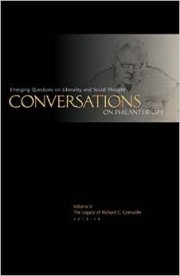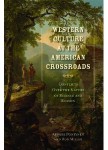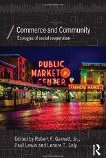Comment on Turner II
burn the page
wrestle like two on fire
place your bets on the field smoke
aligning like luck
and your fortunes
what I love
I give away
. . . come from the artists themselves. The artist’s responsibility is to art—as the poet William Stafford said, a “reckless encounter with whatever comes along”—wherever that leads, rarely part of a master plan, and even more rarely a part of the exchange economy. We read of muses and inspiration, but what these terms mean is that art is not entirely within the conscious control of the artist.
Art is voice. Art is noticing outside context. Art stands out like a thing glimpsed from the corners of our eyes. We must never confuse the subject or meaning of art with the fact of art. Art is not the story but the telling, not the picture but the brush strokes, not the thing but the choice of the thing, not the craft but the use of it. Each piece of great art sponsors its own context, creates itself through its own voice and terms; each of the parts in a piece, be it a poem or a painting, takes on heightened significance, and each part, because it is in a spotlight, becomes a bit strange. When experiencing art, the receptive mind creates a context to hold it, and everything that could be called the “meaning” of art is the construction of this context. Such a mind apprehends immediately whether art has authority, authority being the glow of heightened language or color or light or brush strokes, authority being the defining mark of art, authority being what the muse gives in exchange for the interiority of great art. The bargain is clear and unfortunate: there can be no great art on demand—any great art comes at the cost of strangeness and othermindedness, and what we take as great art on demand is merely the result of great craft and skill but without the depth of meaning of art, without its inherent isolation. No call, no desire, no need—when they come from outside—will or can move the artist to make art; calls for artistry externally constrained by topic or time produce, in most cases, doggerel or its equivalent. It is the rare occasional poem, the rare posed portrait, the rare commissioned biography, that is remembered as great art.
What Artists Can Teach Philanthropists
How will a potential philanthropist learn why gifts are worth giving, and how will the benefactor learn how to behave and how to give with grace? These questions turn on whether philanthropy, like any other form of gift, requires conscious decision making. Consider the artist.
Every night in just about every town, city, and village across the world, someone is practicing, writing, sculpting, painting, weaving, or creating new forms of art in response to impulses too personal or too universal to fathom. Each of these artists could choose to do something else—and for many, almost anything else would be easier to do and more fun. Some seek out criticism in order to improve. Seek it out. Some pay to receive the criticism.
The impetus to create art arises from whatever comes along, and for many the talent to create art is practiced and honed with no career or recompense in mind. An artist creates because he or she “has to”; writers write to “see how it comes out.” The urge to create is like the urge to reproduce or breathe; even if it was once planned and forced, then later nurtured, the creation of art is almost involuntary. The urge to create is akin to curiosity: the need to find out what the next line in a poem in progress might be is no different from the need to find out what is over the next rise, around the next bend, or beyond the great expanse.
What a Great Gift
Most artists work without benefactors or patrons; little or less is paid for their work; the work appears in small venues, in unread magazines, on unvisited websites, or disappears into drawers and trunks to be discovered, maybe, by children or grandchildren. We become confused, in fact, when greed is grafted onto art. Musicians—it is said—would stop making music if there were no possibility of great financial rewards for it; and if that happened, some people say, music would dry up. The argument stems from Johnson’s indolent comment, “No man but a blockhead ever wrote, except for money.” But if we were to be deprived of every composition by professional composers and every note played by professional musicians—relying only on currently unnamed and unknown composers and players—we would enjoy a quality of music equal to what we are used to. The same goes for film, fiction, plays, art, and every other artistic endeavor. Because behind every professional producing art of any sort are hundreds or thousands or even more amateurs who are every bit as talented and skilled, and who produce art as fine as that devised by the paid professional.
In this, art enacts the true gift economy; art is a matter of giving gifts without the expectation of direct return. Often, the response to art is criticism and rejection, and the response of artists is to persist and improve. Craft may be for sale, but not art.
Each artist working alone at home with little chance of an audience is producing a gift that requires only a recipient to be fulfilled. This is the purest form of gift, and somehow we all know that the giver expects nothing in return; and we properly feel that nothing needs to be given in return for the artist’s gift. We have learned that what art may cost in dollars is irrelevant to its meaning and status as art. When we read of an enormous sum paid for an Impressionist painting, we are not reading about art but instead about a market dictated by supply and demand.
The Philanthropist’s Path
The philanthropist who needs to learn what it means to give and how to do it need only look to the artist. Most artists are poor except in talent and desire, and they give the gift of the fruits of their talent even though to do so makes no rational or economic sense. Artists create even when the possibility of being known is absent, because the urge to create is irresistible. It is a compulsion, and the compulsion to help should be the truest reason for philanthropy.
Instead of looking to artists to write the stories of philanthropy, philanthropists should look to artists as examples of how to live the gift culture. Instead of seeking out the highly paid composer, philanthropists should seek out the songwriter in the smoky bar; instead of seeking out royalty-rich novelists, they should seek out the story writer mortgaging her house to attend writers’ workshops; instead of asking artists to fill out the cultural footprint of philanthropy, we should let the uncontrollable urge to create the art of great donors arise from among such donors or those around them—as it surely must, as it does wherever art is to be found.




